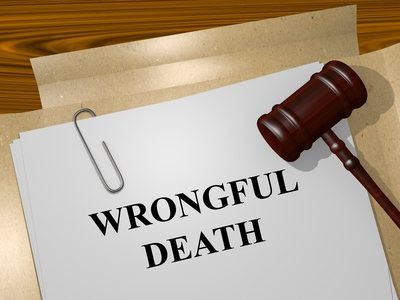

What is the Statute of Limitations and the Discovery Rule for Wrongful Death Claims?
If you have lost a loved one because of the negligence of another, you’re likely feeling heartbroken and overwhelmed. You may also be wondering how you are going to support your family financially in light of the loss. A wrongful death claim may be a valid option to help your family recover damages such as funeral and medical expenses, lost income and more.
When it comes to all types of personal injury claims – including wrongful death – every state has personal injury laws in place. These laws include a statute of limitations and the “Discovery Rule.”
What is the statute of limitations in a wrongful death claim?
A statute of limitations is a time limit on the ability to file a wrongful death claim. The time limit ranges from one to three or more years, depending on state laws. In Washington State, a wrongful death claim has a three-year statute of limitations. To learn more about Washington State’s statute of limitations laws, click here.
What is the “Discovery Rule” in wrongful death claims?
In wrongful death claims, the “Discovery Rule” says that the statute of limitations begins when the claimant discovers – or should have reasonably discovered – the cause of the decedent’s death. In some cases, the discovery happens before the person has died and states support the clock ticking down from that date. Other states hold that the statute of limitations should not begin until the person has died.
Wrongful death lawyers know the laws relevant to the states in which they are licensed so it is best to consult with an experienced local attorney to understand the laws of your jurisdiction relevant to your claim.
Can I still file a wrongful death claim if the statute of limitations has expired?
Generally, no. A court will throw out wrongful death claims outside of the statute of limitations. There are, however, some exceptions to the rule. Plaintiffs are entitled to request that the court waive the statute of limitations so they can file a lawsuit. The request can come in three different forms:
- Tolling the statute of limitations period
- Asking the court to waive the period
- Asking the opposing party to waive the period
Note that a court will only waive in very specific situations that merit waiver and it’s very uncommon. It’s also very uncommon for the opposing party to agree to waive the period.
The most likely scenario for being able to file a wrongful death action outside of the statute of limitations is the use of tolling, which is the delaying or suspending of the statute of limitations period. The “Discovery Rule” could be seen as tolling because it delays the clock on the statute of limitations. Another example of tolling applies to minor children where the statute of limitations does not begin until they reach the age of 18. In its consideration, a court will weigh the benefits of tolling for the plaintiff against the disadvantage toward the plaintiff.
Seek the help of a wrongful death attorney
If you lost a loved one due to a preventable medical error or the reckless/negligent behavior of another, you have enough to deal with. Let an experienced wrongful death attorney fight for justice on your behalf. It is not uncommon to receive a settlement from the insurance company that is five to ten times larger with the help of a wrongful death lawyer. Call the most experienced practicing wrongful death attorneys Bellingham has at Tario & Associates, P.S. today for a FREE consultation! We have been representing grieving family members in Whatcom County, Skagit County, Island County and Snohomish County since 1979. You will pay nothing up front and no attorney fees at all unless we recover damages for you!




